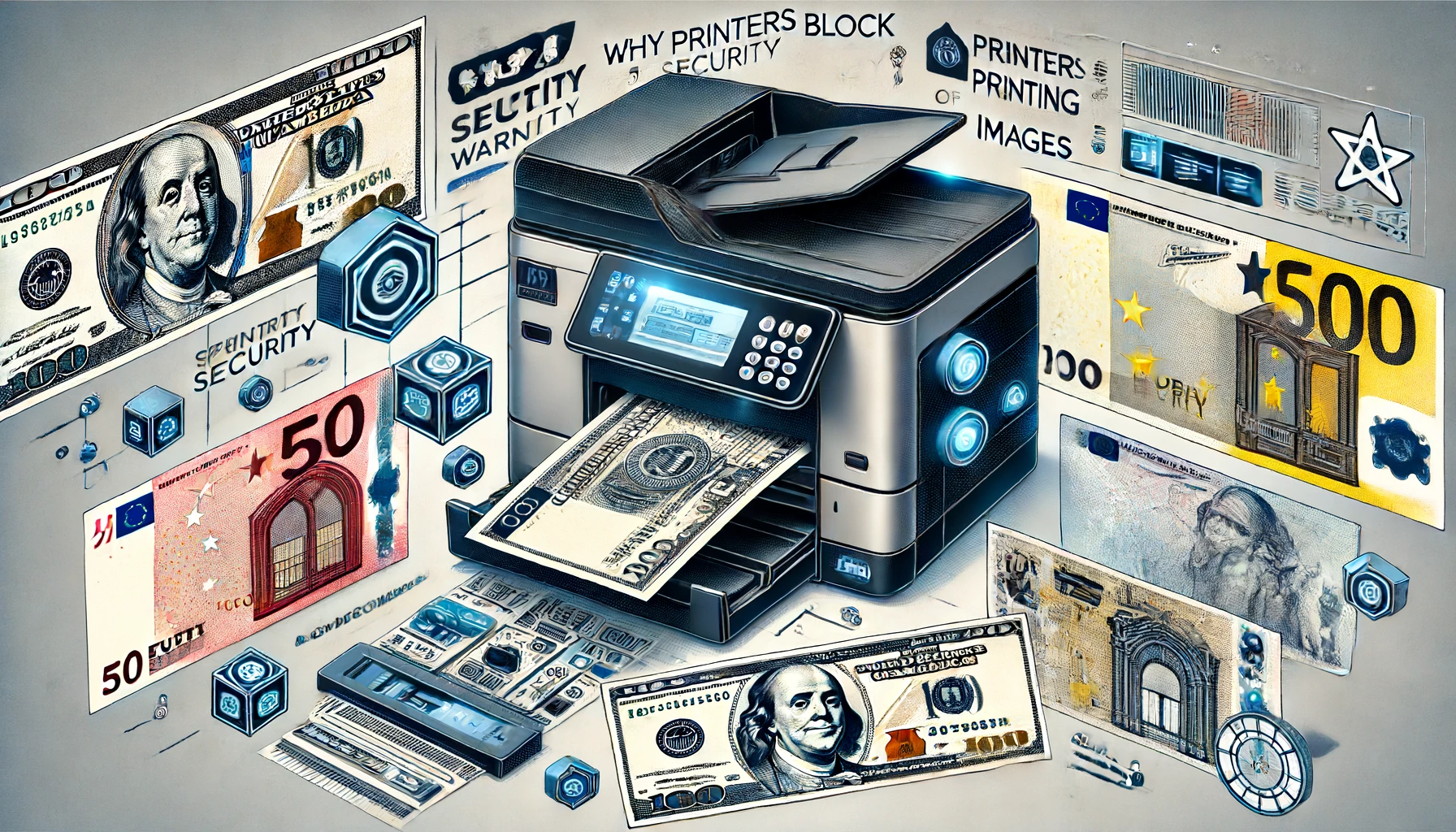In today’s digital age, the technology that makes our lives easier can also pose significant challenges in terms of security and regulation. One intriguing example of this is the inability of standard printers to print images of currency. This restriction isn’t due to a fault in the printer’s design or a lack of technological capability, but rather a deliberate feature embedded within modern printing devices to combat counterfeiting. This article explores the fascinating world of built-in security measures in printers, the legal framework surrounding them, and the implications for both consumers and the broader economic landscape.
✅ Understanding the Technology Behind Printers and Currency
Modern printers are equipped with sophisticated technology that allows them to recognize and block the printing of banknotes. This capability stems from a collaborative effort among printer manufacturers, software developers, and central banks worldwide. At the heart of this technology is something known as the EURion constellation – an arrangement of symbols found on many types of currency, which is designed to be recognized by scanning and copying devices.
Apart from the EURion constellation, other security measures include color-shifting ink, watermarks, and microprinting, which are extremely difficult to replicate without specialized equipment. These features are embedded in the currency during the manufacturing process and are designed to be easily detectable by printers and scanners.
⚠️ Legal Implications of Printing Currency
The legal implications of printing money are significant. In many countries, reproducing banknotes without explicit governmental permission is a criminal offense. Laws such as the U.S. Title 18, Section 474 of the United States Code make it illegal to print or reproduce banknotes except under specific, authorized circumstances. These laws are intended to prevent counterfeiting, which can undermine the economic stability of a country.
The penalties for printing currency can be severe, ranging from fines to imprisonment, depending on the jurisdiction and the scale of the offense. As such, printer manufacturers must comply with national and international regulations by incorporating these anti-counterfeiting technologies.
✅ The Role of the Central Bank Digital Currency (CBDC)
As digital transactions become increasingly prevalent, central banks around the world are exploring or have already implemented digital versions of their currencies, known as Central Bank Digital Currencies (CBDCs). These digital currencies are designed to offer a secure, stable, and regulated alternative to cryptocurrencies and to facilitate easier and more efficient transactions.
The introduction of CBDCs is expected to reduce the reliance on physical cash, which may eventually decrease the need for such stringent security measures in physical currency printing. However, as long as physical cash remains in circulation, the technologies to protect its integrity must evolve to counteract increasingly sophisticated counterfeiting techniques.
✅ Technological and Ethical Considerations
The ethical considerations surrounding the prevention of currency printing touch on several broader themes, including privacy, surveillance, and control over personal property. While the prevention of counterfeiting is clearly beneficial, these technologies also raise questions about the extent of control and surveillance that is warranted in personal devices like printers.
From a technological standpoint, the challenge lies in balancing effectiveness and privacy. As printers and scanners become more connected and smarter, the potential for misuse or overly invasive monitoring increases. Manufacturers and regulators must navigate these waters carefully to uphold security without overstepping personal privacy boundaries.
💡Future Trends and Developments
Looking forward, the intersection of technology and currency printing is poised for further innovation, particularly with advancements in digital imaging and artificial intelligence (AI). AI, for instance, could enhance the detection of counterfeit attempts more accurately and swiftly than current technologies. Additionally, as the use of physical currency declines and digital transactions become more dominant, the role of printers in everyday finance may diminish, altering the landscape of security measures.
🧠 Conclusion
The inability of printers to print images of money is a perfect illustration of how technology can be engineered to address specific legal and security challenges. While these measures are essential for maintaining the integrity of national economies, they also reflect the ongoing need for balance between security and personal freedoms. As technology continues to evolve, so too will the strategies to protect and regulate its use, ensuring that it serves the best interests of society at large.


Leave a Reply